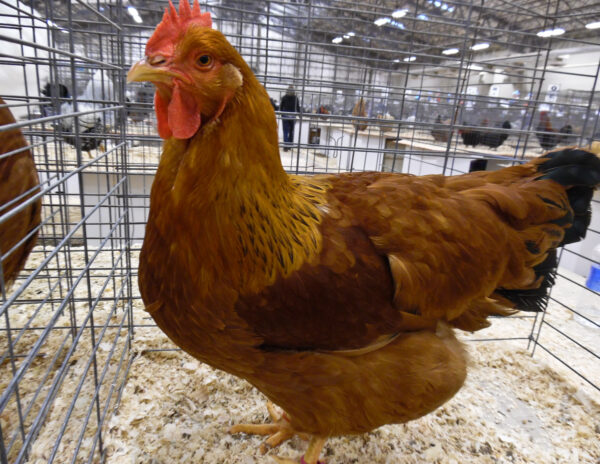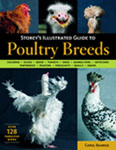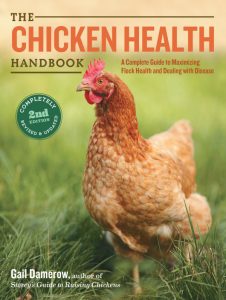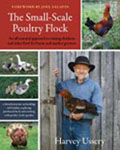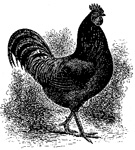
Breed Facts
Status:
Threatened
Use:
Meat
Egg Color:
Tinted to Brown
Egg Size:
Large
Weight:
Male 8.5 lbs. / Female 6.5 lbs.
Temperament:
Docile, or Competitive and Aggressive
Characteristics:
Grow feathers very rapidly; prone to go broody; make good mothers
NEW HAMPSHIRE CHICKEN
The New Hampshire was developed in states of New Hampshire and Massachusetts and is descended from an earlier breed, the Rhode Island Red. In the early 1900s, New Hampshire poultry breeders began to select hens from Rhode Island Red strains that feathered, grew, and matured faster. The breakthrough in the creation of this breed was made by University of New Hampshire professor A. W. “Red” Richardson.
Through intensive selection, a new breed emerged and was named after one of the states where it was developed – New Hampshire. The breed was admitted to the American Poultry Association Standard of Perfection in 1935, and played an important role in the development of a thriving poultry industry in New Hampshire, serving the urban centers of the Northeast.
Chickens were an important source of protein during the Second World War, and after the war there was even a greater demand for poultry meat. In response, New Hampshire chickens were promoted in the popular “Chicken of Tomorrow” contests in the late 1940s. A cross of New Hampshires and Cornish chickens won the category for economy of production for feed efficiency and live weight, while a white Plymouth Rock won the category for carcass characteristics. Today’s commercial broilers are synthetic lines largely derived from the winning breeds from the contest. The New Hampshire breed is also sometimes used to create hybrid sex-link chickens, that is, crosses that can be feather-sexed at hatch.
In 2018, a petition organized by the Canaan Elementary Schools was presented to the governor of New Hampshire asking to make the New Hampshire chicken the official state bird. It was signed into law in June of that same year.
A dual-purpose breed, New Hampshires are a very good choice for pastured poultry. Hens lay about 200-220 large light-brown eggs per year. Cockerels can be raised for meat, and the carcass is large and finishes well. Selection for carcass traits, feed efficiency, or rate of lay can readily improve these traits in your flock. Some strains are prone to go broody, so they make good mothers. When purchasing from individual breeders, be sure to ask about the characteristics that matter most in your flock (growth, egg production, and broodiness tend not to go together). Production strains for rapid growth and better dressing do not have the egg production qualities of the standard dual purpose New Hampshire, and are unlikely to qualify for exhibition.
The New Hampshire has a deep, broad body, somewhat more triangular in shape than the Rhode Island Red, which is descibed as being the shape of a brick They are feather rapidly, and are a brilliant chestnut red in color, and may have pale yellow highlights. The color can be bleached by the sun to an even lighter shade. Most pin feathers are a reddish buff or salmon in color and therefore do not detract from the carcass appearance. The tail is black. Wing feathers are edged in black, as are the lower neck feathers of hens. Their eyes are reddish bay (orange), and their beak is a reddish horn color. The comb is single and medium to moderately large in size; in the females it may flop over a bit. The skin, shanks and feet are yellow; the legs are free of feathers, and a reddish line that runs from shank to toes is desirable in roosters. Males weigh about 8.5 lbs. and hens 6.5 lbs.
The New Hampshire is usually a family-friendly chicken and good for beginners. However, different source stocks can vary from gentle and docile to unfriendly and even aggressive, so ask questions and handle young birds frequently to get them used to people. They may be assertive with more docile breeds, and children should be kept away from aggressive roosters during the breeding season. New Hampshires are known for cold tolerance, but can do well in both cold and warm climates if housed appropriately.
Did you know:
No breed included on the Conservation Priority List has gone extinct since The Livestock Conservancy began work in 1977. Fourteen breeds have graduated off the CPL since 2014, including the Wyandotte chicken in 2016, Highland cattle in 2019, and Hereford pigs in 2024.

Breed Facts
Status:
Watch
Use:
Meat
Egg Color:
Brown
Egg Size:
Large
Market Weight:
6.5 – 8.5 lbs
Temperament:
Competative and Agressive
Characteristics:
Grow feathers very rapidly, prone to go broody, make good mothers
You may be interested in…

